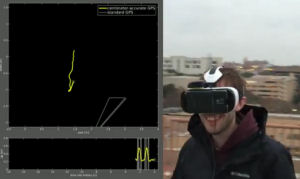
A computer network that emulates schizophrenia is providing University of Texas at Austin researchers with important insights into the inner workings of schizophrenic brains.
Writing about their work in Biological Psychiatry, the researchers explain that the computer neural network they used simulated the excessive release of dopamine in the brain. “The hypothesis is that dopamine encodes the importance – the salience – of experience,” said researcher Uli Grasemann. “When there’s too much dopamine, it leads to exaggerated salience, and the brain ends up learning from things that it shouldn’t be learning from.”
The dopamine theory is known in psychiatric circles as the “hyperlearning hypothesis,” which posits that people suffering from schizophrenia have brains that lose the ability to forget, or ignore, as much as they normally would.
Without forgetting, sufferers lose the ability to extract what’s meaningful out of the immensity of stimuli they encounter. Connections are made that aren’t real, or so many connections occur that the ability to stitch together any kind of coherent story is lost.
The neural network – called DISCERN – was originally designed to learn natural language. In this study, it was modified to simulate what happens to language as the result of eight different types of neurological dysfunction.
In order to model hyperlearning, the researchers simulated an excessive release of dopamine by increasing the system’s learning rate – essentially telling it to stop forgetting. “It’s an important mechanism to be able to ignore things,” said Grasemann. “What we found is that if you crank up the learning rate in DISCERN high enough, it produces language abnormalities that suggest schizophrenia.”
After retraining with the elevated learning rate, DISCERN began putting itself at the center of fantastical, delusional stories that incorporated elements from other stories it had been told to recall. In one answer, for instance, DISCERN claimed responsibility for a terrorist bombing.
In another instance, it began showing evidence of “derailment” – replying to requests for a specific memory with a jumble of dissociated sentences, abrupt digressions and constant leaps from the first- to the third-person and back again.
“Information processing in neural networks tends to be like information processing in the human brain in many ways,” says Grasemann. “So the hope was that it would also break down in similar ways. And it did.” The findings aren’t absolute proof that the hyperlearning hypothesis is correct, but Grasemann says they do provide support for it.
Perhaps more importantly, the research shows that neural networks have utility in understanding the human brain and mental illness. “We have so much more control over neural networks than we could ever have over human subjects,” Grasemann concluded. “The hope is that this kind of modeling will help clinical research.”
Related:
Microorganisms Behind Schizophrenia And Alzheimer’s?
Sexual Success And The Schizoid Factor
The High Cost Of Intelligence
The Rain In Spain Falls Only In The Human Brain


















Comments are closed.